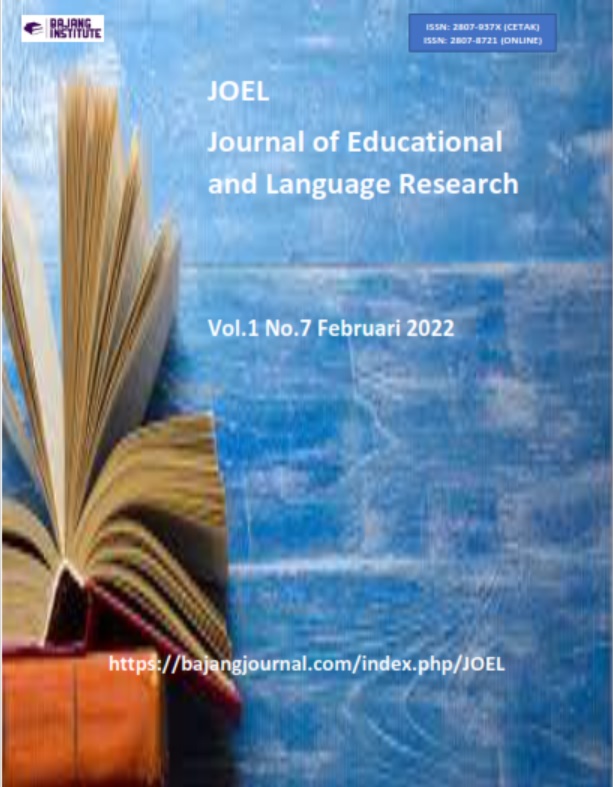THE EFFECT OF WORK MOTIVATION ON EMPLOYEE PERFORMANCE WITH LENGTH OF WORK AS A MODERATING VARIABLE AT PT. GOTONG ROYONG JAYA MENDARIS
DOI:
https://doi.org/10.53625/joel.v1i7.1535Keywords:
Work Motivation, Length of Work, Employee PerformanceAbstract
This study aims to determine the effect of work motivation on employee performance with length of work as a moderating variable at PT. Gotong Royong Jaya Mendaris. In this study, data were collected through a questionnaire method to 48 respondents, employees of PT. Gotong Royong Jaya Mendaris Maintenance Section using the census method. Then the analysis was carried out using the descriptive analysis method. That includes validity and reliability tests, classical assumption tests, hypothesis testing through t-test and analysis of the coefficient of determination (R2). The data analysis technique used is multiple linear regression analysis using the Absolute Difference Test which serves to prove the research hypothesis. The data that has met the validity test, reliability test, and classical assumption test are processed to produce the following regression equation: Y = 6.439 + 1.328X - 0.244Z. With 1 Independent Variable, 1 Dependent Variable and 1 Moderating Variable, it shows that. Hypothesis 1 states that work motivation has a positive effect on employee performance. From table 4.15, the tcount value is 3,416. With = 5%, ttable (5%; nk = 46) the ttable value is 2,013. From the description it can be seen that tcount (3.416) > t table (2,013), as well as the significance value of 0.001 <0.05, it can be concluded that the first hypothesis is accepted, meaning that the work motivation variable (X) has an effect on the employee performance variable (Y). Hypothesis 2 states that the variable length of service (Z) has no effect on the employee performance variable (Y). From table 4.15, the tcount value is -0.743. With = 5%, ttable (5%; nk = 46) the ttable value is -2.013. From this description it can be seen that tcount (-0.743) > ttable (-2.013), and the significance of which is 0.461 > 0.05, it can be concluded that the second hypothesis is rejected, meaning that the variable length of work (Z) has no effect on the employee performance variable (Y). Meanwhile, hypothesis 3 states that the length of work variable (Z) cannot moderate the effect of the work motivation variable (X) on the employee performance variable (Y). From table 4.16 obtained a value of -0.629 with a significance value of 0.532 > 0.05 that the parameter coefficient value is negative but not significant. Where it can be concluded that the third hypothesis is rejected.
References
Darmawan, D. (2011). Teknologi Pembelajaran. Bandung: Remaja Rosdakarya.
Effandi, Z. et al, (2007). Trend Pengajaran dan Pembelajaran Matematik. Cheras, Kuala Lumpur: Utusan Publication.
Hariadi, D. (2010). Pembelajaran Sistem Tata Surya Berbantuan Komputer, [Tesis]. Bandung: Universitas Komputer Indonesia (UNIKOM).
Isnanto, R. (2004). Aplikasi Teknologi Multimedia pada Bidang PendidikanSains dan Teknologi, in Seminar Nasional Aplikasi Teknologi Informasi 2004. Yogyakarta, 19 Juni. FT Undip, Semarang, pp. 1-7.
Kusnandar, A. et al. (2007). Panduan Pengembangan Multimedia Pembelajaran. Jakarta: Departemen Pendidikan Nasional.
Prawirohardjo, S. (2016). Ilmu Kebidanan. Jakarta: Yayasan Bina Pustaka Sarwono Prawirohardjo.
Pribadi, A. B. (2004). Ketersediaan dan Pemanfaatan Media dan Teknologi Pembelajaran di Perguruan Tinggi. Jurnal Pendidikan FKIP Universitas Terbuka, 5 (2), 145-156.











